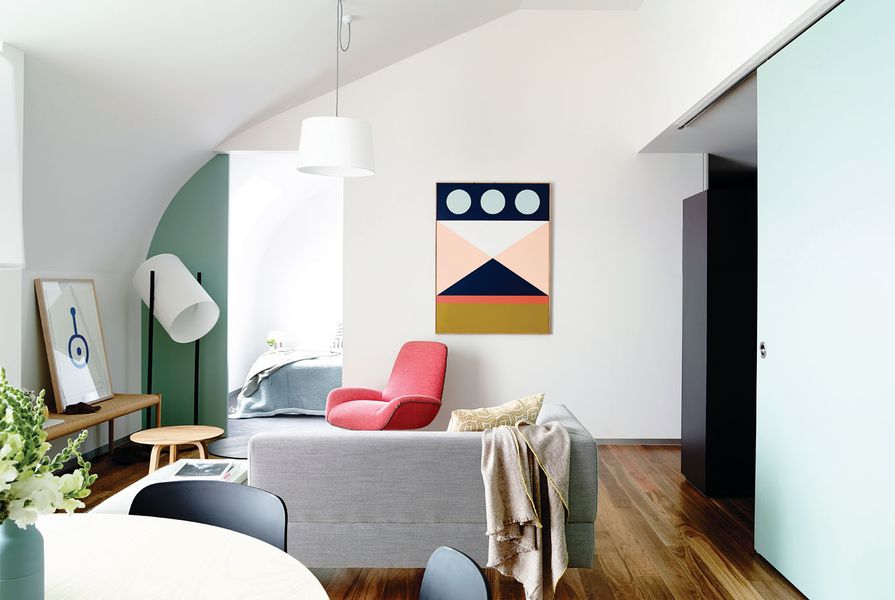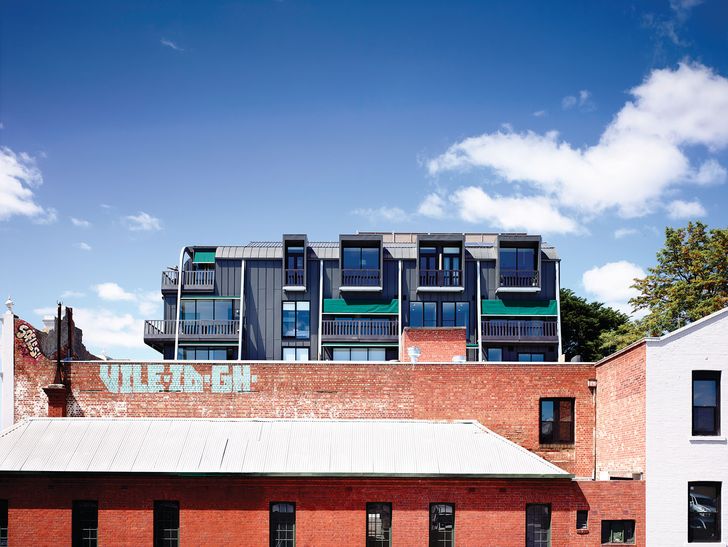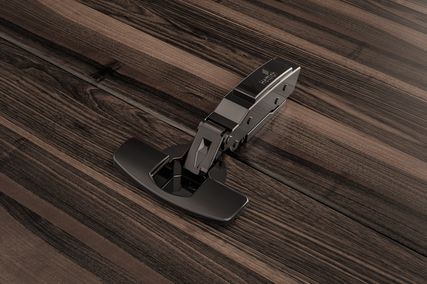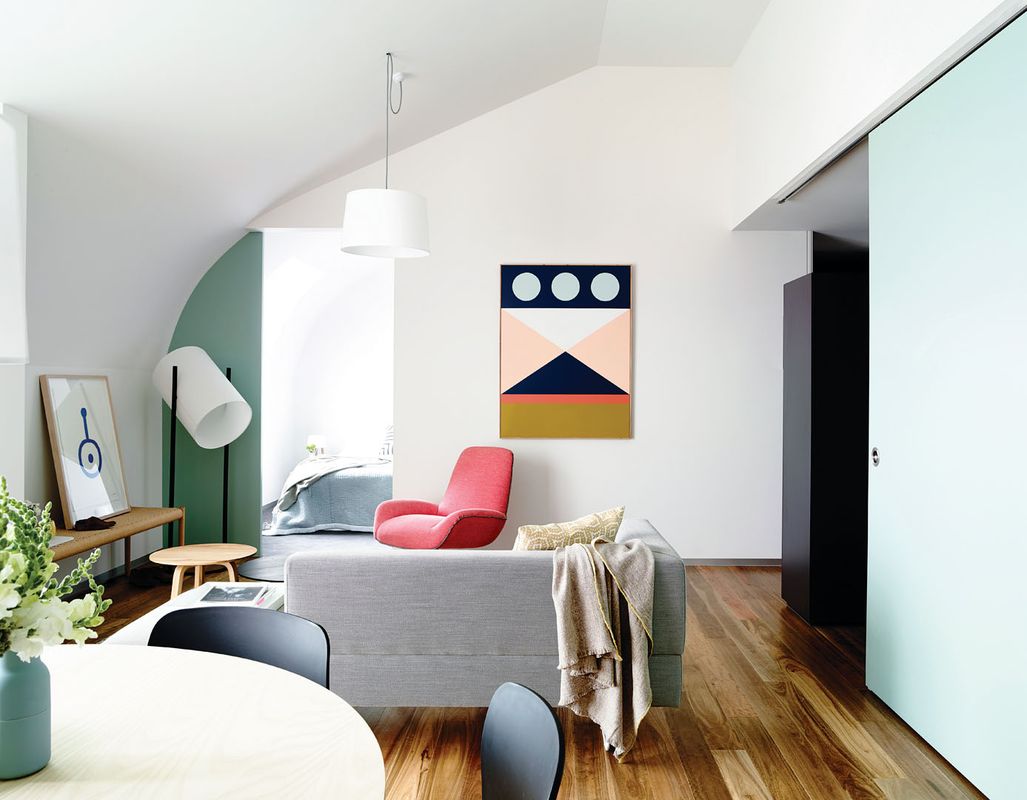At this stage in the urban infill game, a worthy architectural challenge is one of refinement and nuance, rather than radical originality. At a time when the so-called “market” is speculating with smaller and meaner apartments, Neometro’s Smith Street development shows that decent-sized, well-considered apartments will find their own niche. Combining generous proportions with carefully designed practical details, these dwellings make a welcome change from a real estate scene that is glutted with over-polished but poorly designed product, and ill-suited to its task of making apartment living as easy and accommodating as dwelling within a house.
The Melbourne suburb of Fitzroy has long been a testing ground for residential conversions and additions, and the Smith Street development by Neometro is another chapter in the evolution of the suburb. At the same time, the development is the first air-rights extension of one of Smith Street’s prominent former furniture emporium buildings. These characterful, early-twentieth-century buildings, which are dotted along the length of Smith Street, stand tall against their neighbours, and the views from their upper levels verge on the spectacular. The emporia typically boast high ceilings and well-proportioned facades with large windows; the building in question is no exception.
The residential extension involves three levels of loft-style apartments in a metal-clad form that tapers gently inwards from the newly reconstructed parapet of the original heritage building. The lower levels of the building contain hospitality and retail tenants, fronting Smith Street. Considered as a whole, this mixed-use development is a quintessential example of a type of urban infill that our planning schemes seek to support, as a method of accommodating densification and population growth in places well served by public transport. Smith Street is the epitome of such a place.
The form of the extension, with its pop-out dormer-style window forms and Juliet balconies, calls to mind the garret of a Parisian apartment building, and indeed Neometro’s founder and design director Jeff Provan cites the French apartment as an inspiration for the company’s product. In addition to the external resemblance, Jeff asserts that the model of the European apartment is also relevant in terms of the planning of interior detail. Europe has a considerably more established culture of apartment living, and as such the details of the typical European apartment are more refined, more evolved, than those of the standard Australian equivalent.
The Smith Street residential development is another chapter in the evolution of Fitzroy.
Image: Derek Swalwell
Jeff suggests that it is the unglamorous parts of an apartment that are difficult to get right, even though they make all the difference, whereas the “good bits,” like living spaces, are far easier to design well. Using the template of “how would I live in this apartment?,” Jeff and his team concentrate on such incidental details as where to put the vacuum cleaner and the broom, or the impact of the toaster and other appliances on the appearance of the kitchen.
These are matters that are more easily attended to in houses, where a relative abundance of space takes the pressure off the functionality of individual components. In apartment design every detail matters and the Neometro product is designed accordingly. The apartment I visited exemplified this approach and seemed to have a place for everything one might need to live efficiently in a small space.
The ceiling of the apartment follows the new roof form, which tapers gently inwards from the original heritage building. Artwork: Rhys Lee, Swimming Pool, 2012.
Image: Derek Swalwell
I call it a small space, but in fact by current market standards the one-bedroom apartment I saw was enormous, approximately sixty square metres. This was typical of dwellings in the building. The relative generosity allowed the designers to enact another of their techniques, the careful zoning and flow of social spaces and spaces for work – a delicate matter of connecting and separating through the details of space planning, with the use of sliding coloured panels to create privacy where required.
The apartment has a practical-sized study alcove that can easily be visually separated from the living room, and a dining area that can seat six people with ease. And why not? After all, the occupant of a one-bedroom dwelling is no less likely to entertain. The kitchen has been carefully designed to allow for visual “cleanliness,” with an appliance cupboard, an oversized pantry and a concealed refrigerator off to the side. This makes the room suitable for viewing directly from the living areas, which is essential for civilized apartment living.
Another necessity for apartment living that Jeff emphasized in our discussion was the provision of spaces that can operate in multiple modes or guises. In the apartment we visited, the example he gave was the bathroom. This space needed to perform three distinct functions: laundry, powder room (with separate access) and ensuite. Once again, consideration of the unglamorous detail was the hallmark of the design, and the room performs all of its roles with practical ease and an abundance of storage.
As Australian cities become denser, the phenomenon of apartment living is going to be increasingly prevalent. If the culture of apartment living in Australia is to mature, and the practical realities of living in apartments is going to improve, we will need to see more dwellings like these. I look forward to the ongoing evolution in Neometro’s next project.
Products and materials
- Roofing and external walls
- Colorbond standing seam roof cladding in ‘Woodland Grey’.
- Internal walls
- CSR Fire Check plasterboard.
- Windows
- Window fabrication by Jaden Aluminium Windows using Capral black aluminium window frames; Insail Yachting awnings; D and C Design curtains and blinds.
- Doors
- Dulux enamel paint; Brio sliding door tracks; Designer Doorware edge and flush pulls.
- Flooring
- Signorino terrazzo tiles, honed; engineered spotted gum flooring from Profile Timber Floors; Godfrey Hirst Cut Pile Plush carpet.
- Lighting
- Eros Lighting semi-recessed downlights; Giffin Design Lime Light floor lamp; Mayfield Lamps drum shade pendants; Flos Mini Glo Ball wall lamp from Euroluce
- Kitchen
- Spotted gum timber veneer joinery by Gemwood Interiors; ss bench; National Tiles glazed ceramic splashback; Fisher and Paykel cooktop, oven and dishdrawer; Phoenix mixer from Reece
- Bathroom
- National Tiles glazed ceramic wall tiles; Artedomus shower tiles; Urban soft wall basin and Axus towel rail from Mico; Vivid basin mixer from Reece; Lava toilet from Jika; custom mirrored cabinet by Gemwood Interiors; Ram shower head; Atlantis shower tray; Clearly Frameless shower screen.
- Other
- Jardan sofa and armchair; Hay dining chairs from Cult; Milk NA1 Lights and Benjamin Hubert dining table from Great Dane Furniture.
Credits
- Project
- Smith Street Apartment
- Developer/architect
- Neometro
Melbourne, Vic, Australia
- Project Team
- Jeff Provan, Nina Provan, Grant Amon, Stephen Herbst, Clare McAllister, Karen Alcock, Maria Danos, Jack Tu, Jacqueline O’Brian
- Consultants
-
Architect
Grant Amon Architects, MA and Co Architects
Builder Neocon 4
Engineer Bland Connard Menzies
Landscaping Oculus Landscape Architecture & Urban Design, Neometro
- Site Details
-
Location
Melbourne,
Vic,
Australia
Building area 63 m2
- Project Details
-
Status
Built
Design, documentation 8 months
Construction 18 months
Category Interiors, Residential
Type Apartments
Source
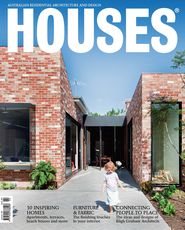
Project
Published online: 14 Jul 2014
Words:
Marcus Baumgart
Images:
Derek Swalwell
Issue
Houses, April 2014

